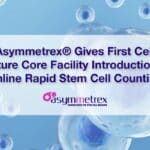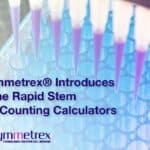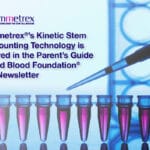Article Stem Cells by Stuart P. Atkinson
“A very exciting demonstration of the remarkable potential of combining gene editing and regenerative medicine. Though future treatment with edited iPSC-derived red blood cells is unlikely to be achieved, the reported experimental systems could reveal the way to safely edit sickle cell patients’ own adult blood stem cells, which could cure their disease.” Asymmetrex – May 11, 2015
iPSCs and CRISPR – Daring Duo Combine to Fight Sickle Cell Disease – Sickle cell disease (SCD) is caused by a genetic abnormalities in the hemoglobin genes which leads to the production of abnormally shaped mature red blood cells, provoking various acute and chronic complications with an accompanying high mortality rate [1]. The best treatments include blood transfusions or bone marrow transplants from a matched donor, but this is limited due to the eventual immune response which is mounted against the donated cells. This problem led the researchers from the laboratory of Linzhao Cheng (Johns Hopkins) to propose a different strategy to provide SCD patients with the matched red blood cells they require – the generation of induced pluripotent stem cells from SCD patients, the in vitro correction of the mutated hemoglobin gene using CRISPR/Cas9 technology, and the subsequent differentiation of cells into the red blood cells required [2].
The study utilized two iPSC lines previously generated from adult hematopoietic cells using episomal vectors; TNC1 from a SCD patient containing the homozygous s mutation, and BC1 from a healthy donor [3, 4]. Then, using the CRISPR/Cas9 endonuclease system and a guide RNA targeting the region containing the SCD mutation, the group successfully corrected one mutated HBB allele with no undesired insertions of the donor vector seen elsewhere in the genome. Of note, this study found the level of efficiency offered by using CRISPR/Cas9 to be higher than for other correction strategies using zinc-finger nucleases (ZFNs) or transcription activator-like effector nucleases (TALENs). Differentiation of this heterozygous iPSC line to erythrocytes used an improved feeder-free and xeno-free three-step culture strategy, generating enucleated hemoglobin expressing cells to a similar level to that observed for the parental TNC1 iPSC line (see figure). Importantly, the researchers detected -globin protein expressed from the corrected HBB allele in these erythrocytes. Erythrocytes also contained hemoglobin tetramers containing HBB in individual cells, and displayed an oxygen binding capacity similar to that observed in primary CB erythrocytes.

This represents an exciting step towards the clinical application of corrected iPSC-derivatives. Not only is the correction technique safe and efficient, but the differentiation technique used a clinically relevant strategy, and the resultant cells show some level of functionality. Future preclinical models/clinical trials will assess in vivo efficacy and safety for these cells, and furthermore, this strategy also has the capacity to be used for other important genetic diseases.
Discussion Points
- Will these cells be safe in the long term?
- How can this strategy be scaled up/made more efficient?
- Will this strategy translate into adequate in vivo functionality?
- Which other blood related diseases/disorders can we tackle next?
References
- Yawn BP, Buchanan GR, Afenyi-Annan AN, et al. Management of sickle cell disease: summary of the 2014 evidence-based report by expert panel members. JAMA 2014;312:1033-1048.
- Huang X, Wang Y, Yan W, et al. Production of Gene-Corrected Adult Beta Globin Protein in Human Erythrocytes Differentiated from Patient iPSCs After Genome Editing of the Sickle Point Mutation. Stem Cells 2015;33:1470-1479.
- Chou BK, Mali P, Huang X, et al. Efficient human iPS cell derivation by a non-integrating plasmid from blood cells with unique epigenetic and gene expression signatures. Cell research 2011;21:518-529.
- Dowey SN, Huang X, Chou BK, et al. Generation of integration-free human induced pluripotent stem cells from postnatal blood mononuclear cells by plasmid vector expression. Nature protocols 2012;7:2013-2021.







Leave a Reply